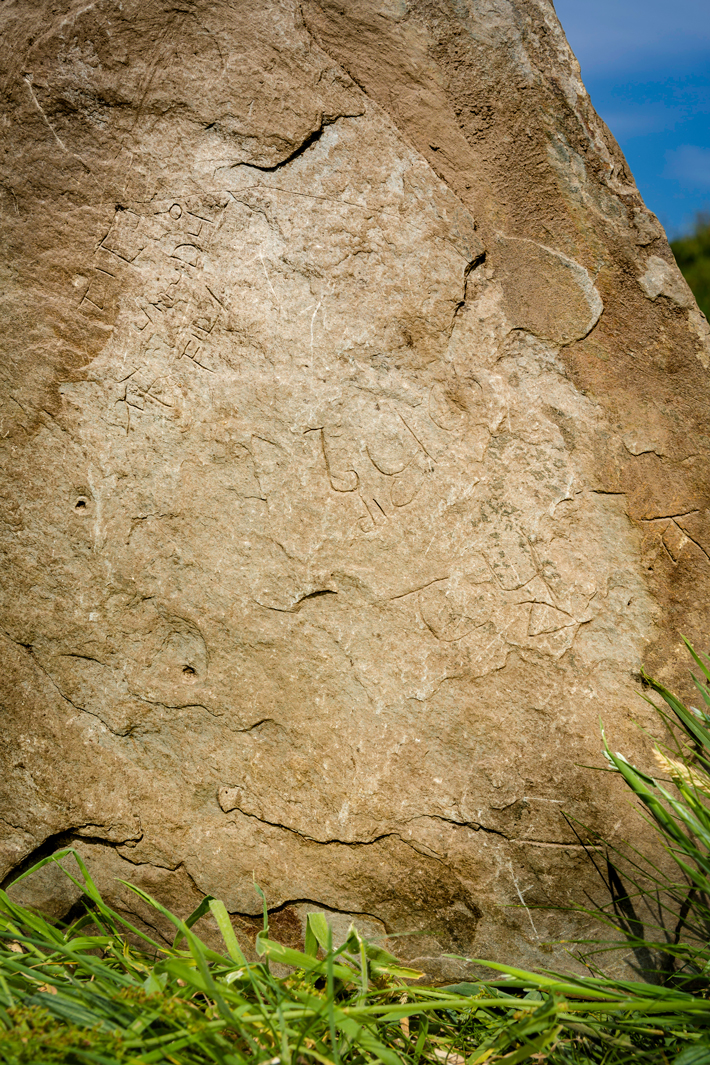Features
A Dark Age Beacon
By JASON URBANUS
Monday, January 07, 2019
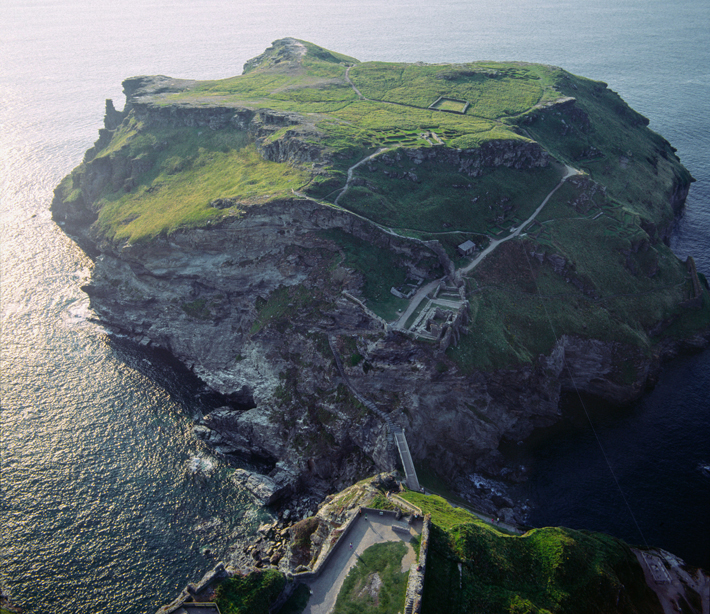 At the beginning of the fifth century A.D., the people of the province of Britannia found themselves living outside the borders of the Roman Empire for the first time in more than 350 years. The previous centuries had been prosperous ones for the citizens of Rome’s most northwesterly territory, but their circumstances would soon change radically. The diverse population, made up of native Celtic Britons, the offspring of Roman soldiers, and immigrants from elsewhere in the empire, faced an uncertain future. The collapse of Roman Britain ushered in a period known in the popular imagination as the Dark Ages. It’s an era commonly thought to have been characterized by economic breakdown, cultural deterioration, and mass invasion by pagan Germanic peoples such as the Angles, Saxons, and Jutes. After the dissolution of a central Roman ruling body, Britain began to fracture politically into several small kingdoms. Few written sources date to the time, making it one of the least documented and least understood periods in British history.
At the beginning of the fifth century A.D., the people of the province of Britannia found themselves living outside the borders of the Roman Empire for the first time in more than 350 years. The previous centuries had been prosperous ones for the citizens of Rome’s most northwesterly territory, but their circumstances would soon change radically. The diverse population, made up of native Celtic Britons, the offspring of Roman soldiers, and immigrants from elsewhere in the empire, faced an uncertain future. The collapse of Roman Britain ushered in a period known in the popular imagination as the Dark Ages. It’s an era commonly thought to have been characterized by economic breakdown, cultural deterioration, and mass invasion by pagan Germanic peoples such as the Angles, Saxons, and Jutes. After the dissolution of a central Roman ruling body, Britain began to fracture politically into several small kingdoms. Few written sources date to the time, making it one of the least documented and least understood periods in British history.
Hundreds of years later, medieval writers who chronicled early British history portrayed post-Roman Britain as a mystical time of warlords and epic battles, of monsters, dragons, and wizards. It was also the age of King Arthur, Britain’s greatest legendary hero, who was said to have led the Britons to victory against the Germanic invaders. It is difficult for scholars to disentangle the reality of life in the early Dark Ages from the many myths associated with it, as there are few established facts upon which archaeologists and historians can rely. But recent excavations on the shores of Cornwall at Tintagel Castle, a place inextricably intertwined with Arthurian legend, have revealed new evidence about life in post-Roman Britain that seems to contradict the traditional Dark Age narrative. Archaeologists now believe that here, in one of the most remote places in England, a settlement unlike any other thrived from the fifth through eighth centuries. As the new story of Tintagel shows, this era in Britain’s history was anything but dark.
Today, the approach to Tintagel resembles something out of a fantasy movie. A sharp descent from a nearby village winds through a deep, narrow ravine before eventually leading to a small hidden cove. From there, the ruins of a castle suddenly rise up out of the Celtic Sea, seemingly out of nowhere. While Tintagel is known as an island, it is actually a craggy headland jutting out into the water, tethered to the coast by a thin, rocky spit of land. It is currently accessible only by ascending a steep, and, at times, daunting staircase. As dramatic a setting as it is, hundreds of thousands of visitors make the pilgrimage here each year for another reason—to follow in King Arthur’s footsteps. Arthur’s association with Tintagel Castle dates back nearly a thousand years. The British cleric Geoffrey of Monmouth’s widely read twelfth-century History of the Kings of Britain records that Arthur was conceived at Tintagel Castle, the product of a duplicitous union between Uther Pendragon, King of Britain, and Ygerna, Duchess of Cornwall (see “Was There a Real King Arthur?”). Although little is known about Monmouth himself, his epic book propelled him into the role of de facto national historian of England. His Arthurian tales were particularly popular with the literate upper classes. In fact, most of the standing remains visible at Tintagel belong to a thirteenth-century medieval castle that was directly inspired by the legend. One of Europe’s wealthiest men, Richard, Earl of Cornwall and brother of King Henry III, reportedly read Monmouth’s account and was moved to build a romanticized fantasy castle on the supposed spot of King Arthur’s conception.
|
Sidebar:
|
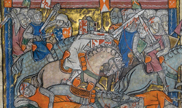
Was There A Real King Arthur?
|
Top 10 Discoveries of 2018
Monday, December 10, 2018

Advertisement
DEPARTMENTS
Also in this Issue:
Advertisement
IN THIS ISSUE
From the Trenches
The Case of the Stolen Sumerian Antiquities
Off the Grid
Ancient Amazonian Chocolatiers
Fit for a Prince
When Things Got Cheesy
Funny Business
Double Vision
Raise a Toast to the Aurochs
A Lost Sock's Secrets
Land of the Ice and Snow
Bath Tiles
India's Anonymous Artists
No Rainbow Required
Passage to the Afterlife
World Roundup
Scottish clan memorabilia, a conquistador shrine, Neolithic nutmeg, Maya sea salt harvesters, and a Chinese model house
Artifact
Heirloom apparent
Advertisement

Recent Issues
-
 May/June 2024
May/June 2024
-
 March/April 2024
March/April 2024
-
 January/February 2024
January/February 2024
-
 November/December 2023
November/December 2023
-
 September/October 2023
September/October 2023
-
 July/August 2023
July/August 2023
-
 May/June 2023
May/June 2023
-
 March/April 2023
March/April 2023
-
 January/February 2023
January/February 2023
-
 November/December 2022
November/December 2022
-
 September/October 2022
September/October 2022
-
 July/August 2022
July/August 2022
-
 May/June 2022
May/June 2022
-
 March/April 2022
March/April 2022
-
 January/February 2022
January/February 2022
-
 November/December 2021
November/December 2021
-
 September/October 2021
September/October 2021
-
 July/August 2021
July/August 2021
-
 May/June 2021
May/June 2021
-
 March/April 2021
March/April 2021
-
 January/February 2021
January/February 2021
-
 November/December 2020
November/December 2020
-
 September/October 2020
September/October 2020
-
 July/August 2020
July/August 2020
-
 May/June 2020
May/June 2020
-
 March/April 2020
March/April 2020
-
 January/February 2020
January/February 2020
-
 November/December 2019
November/December 2019
-
 September/October 2019
September/October 2019
-
 July/August 2019
July/August 2019
-
 May/June 2019
May/June 2019
-
 March/April 2019
March/April 2019
-
 January/February 2019
January/February 2019
-
 November/December 2018
November/December 2018
-
 September/October 2018
September/October 2018
-
 July/August 2018
July/August 2018
-
 May/June 2018
May/June 2018
-
 March/April 2018
March/April 2018
-
 January/February 2018
January/February 2018
-
 November/December 2017
November/December 2017
-
 September/October 2017
September/October 2017
-
 July/August 2017
July/August 2017
-
 May/June 2017
May/June 2017
-
 March/April 2017
March/April 2017
-
 January/February 2017
January/February 2017
-
 November/December 2016
November/December 2016
-
 September/October 2016
September/October 2016
-
 July/August 2016
July/August 2016
-
 May/June 2016
May/June 2016
-
 March/April 2016
March/April 2016
-
 January/February 2016
January/February 2016
-
 November/December 2015
November/December 2015
-
 September/October 2015
September/October 2015
-
 July/August 2015
July/August 2015
-
 May/June 2015
May/June 2015
-
 March/April 2015
March/April 2015
-
 January/February 2015
January/February 2015
-
 November/December 2014
November/December 2014
-
 September/October 2014
September/October 2014
-
 July/August 2014
July/August 2014
-
 May/June 2014
May/June 2014
-
 March/April 2014
March/April 2014
-
 January/February 2014
January/February 2014
-
 November/December 2013
November/December 2013
-
 September/October 2013
September/October 2013
-
 July/August 2013
July/August 2013
-
 May/June 2013
May/June 2013
-
 March/April 2013
March/April 2013
-
 January/February 2013
January/February 2013
-
 November/December 2012
November/December 2012
-
 September/October 2012
September/October 2012
-
 July/August 2012
July/August 2012
-
 May/June 2012
May/June 2012
-
 March/April 2012
March/April 2012
-
 January/February 2012
January/February 2012
-
 November/December 2011
November/December 2011
-
 September/October 2011
September/October 2011
-
 July/August 2011
July/August 2011
-
 May/June 2011
May/June 2011
-
 March/April 2011
March/April 2011
-
 January/February 2011
January/February 2011
Advertisement





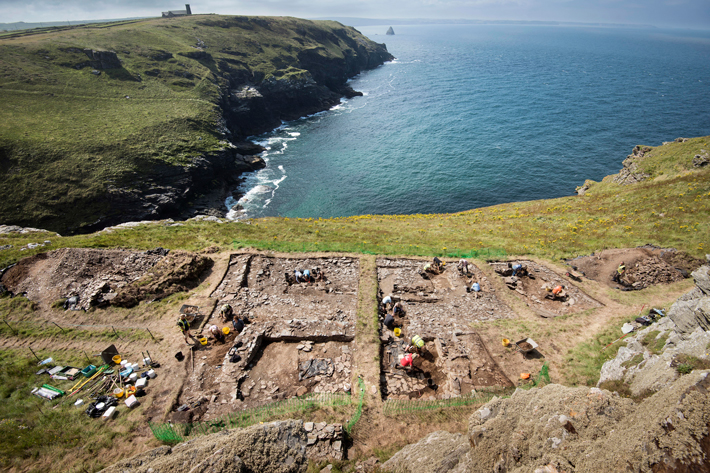 Scattered around the ruins of this medieval castle are the footprints of much older, smaller rectangular buildings. These are the remains of post-Roman Tintagel. English Heritage, the organization that manages the site, recently commissioned a five-year project to better understand this settlement. “The impetus of this project is to interpret Tintagel’s earlier history, which, for me, is more important than the later castle,” says Win Scutt, English Heritage properties curator.
Scattered around the ruins of this medieval castle are the footprints of much older, smaller rectangular buildings. These are the remains of post-Roman Tintagel. English Heritage, the organization that manages the site, recently commissioned a five-year project to better understand this settlement. “The impetus of this project is to interpret Tintagel’s earlier history, which, for me, is more important than the later castle,” says Win Scutt, English Heritage properties curator.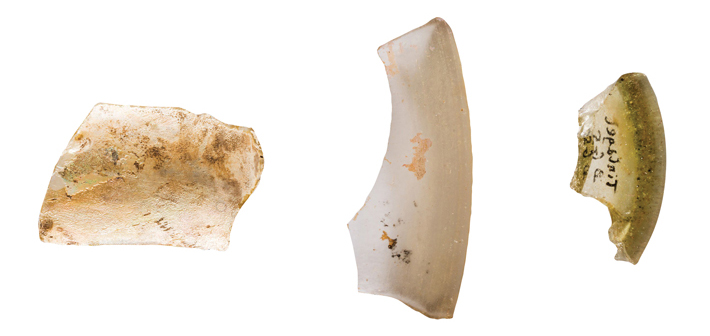 The first excavations at Tintagel began in the 1930s, and researchers returned throughout the twentieth century. Given the small, cell-like appearance of some of the buildings, archaeologists once believed that Tintagel was the site of a secluded monastery, an interpretation researchers now question.
The first excavations at Tintagel began in the 1930s, and researchers returned throughout the twentieth century. Given the small, cell-like appearance of some of the buildings, archaeologists once believed that Tintagel was the site of a secluded monastery, an interpretation researchers now question.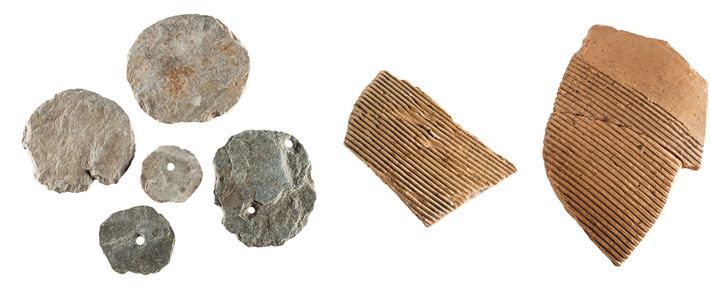 Although only around a tenth of the island has been excavated, research suggests that as many as 100 post-Roman buildings may be spread around the site. Scholars have long thought that large settlements simply didn’t exist in the post-Roman period. Sizable towns such as Londinium (London), Camulodunum (Colchester), and Verulamium (St. Albans) were the socioeconomic, political, and religious heart of Roman Britain. These urbanized centers became obsolete after the end of Roman rule and their populations dramatically declined as people dispersed into the countryside. If the team’s projections are correct, Tintagel might have been the most densely occupied site in all of Britain. “This is bigger than London,” says Scutt. “It’s the biggest in Britain. It’s quite phenomenal because we don’t have anything to compare it with.”
Although only around a tenth of the island has been excavated, research suggests that as many as 100 post-Roman buildings may be spread around the site. Scholars have long thought that large settlements simply didn’t exist in the post-Roman period. Sizable towns such as Londinium (London), Camulodunum (Colchester), and Verulamium (St. Albans) were the socioeconomic, political, and religious heart of Roman Britain. These urbanized centers became obsolete after the end of Roman rule and their populations dramatically declined as people dispersed into the countryside. If the team’s projections are correct, Tintagel might have been the most densely occupied site in all of Britain. “This is bigger than London,” says Scutt. “It’s the biggest in Britain. It’s quite phenomenal because we don’t have anything to compare it with.” 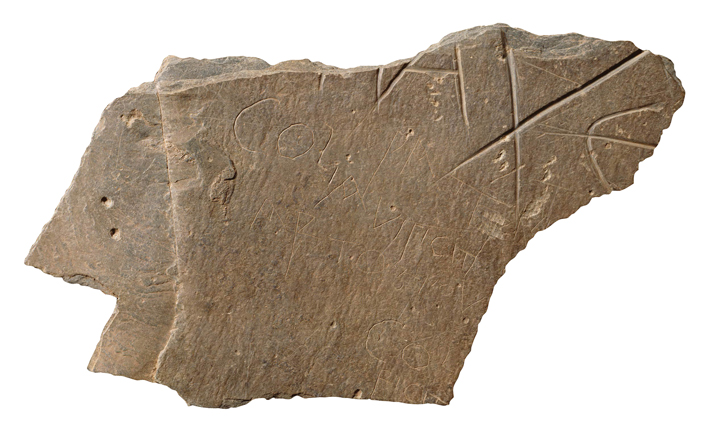 No piece of evidence better exemplifies the culture of post-Roman Tintagel than an inscribed piece of slate that was found embedded in a recently excavated building’s wall. Not only is it an exceptional example of post-Roman writing in Britain, but it also suggests the presence of a literate Christian population at Tintagel. While late Roman Britain was officially a Christian society, Christianity waned in the post-Roman period, thanks in large part to invasion by pagan Germanic peoples. However, the inscribed slate shows that Christian ideals and lifestyles were maintained at Tintagel throughout this period. Another example of writing from the site is the so-called Artognou stone, which was discovered in the late 1990s. This artifact caused a sensation, given the intriguing similarities between the inscribed name “Artognou” and “Arthur,” but experts have since dismissed any historical connection.
No piece of evidence better exemplifies the culture of post-Roman Tintagel than an inscribed piece of slate that was found embedded in a recently excavated building’s wall. Not only is it an exceptional example of post-Roman writing in Britain, but it also suggests the presence of a literate Christian population at Tintagel. While late Roman Britain was officially a Christian society, Christianity waned in the post-Roman period, thanks in large part to invasion by pagan Germanic peoples. However, the inscribed slate shows that Christian ideals and lifestyles were maintained at Tintagel throughout this period. Another example of writing from the site is the so-called Artognou stone, which was discovered in the late 1990s. This artifact caused a sensation, given the intriguing similarities between the inscribed name “Artognou” and “Arthur,” but experts have since dismissed any historical connection.